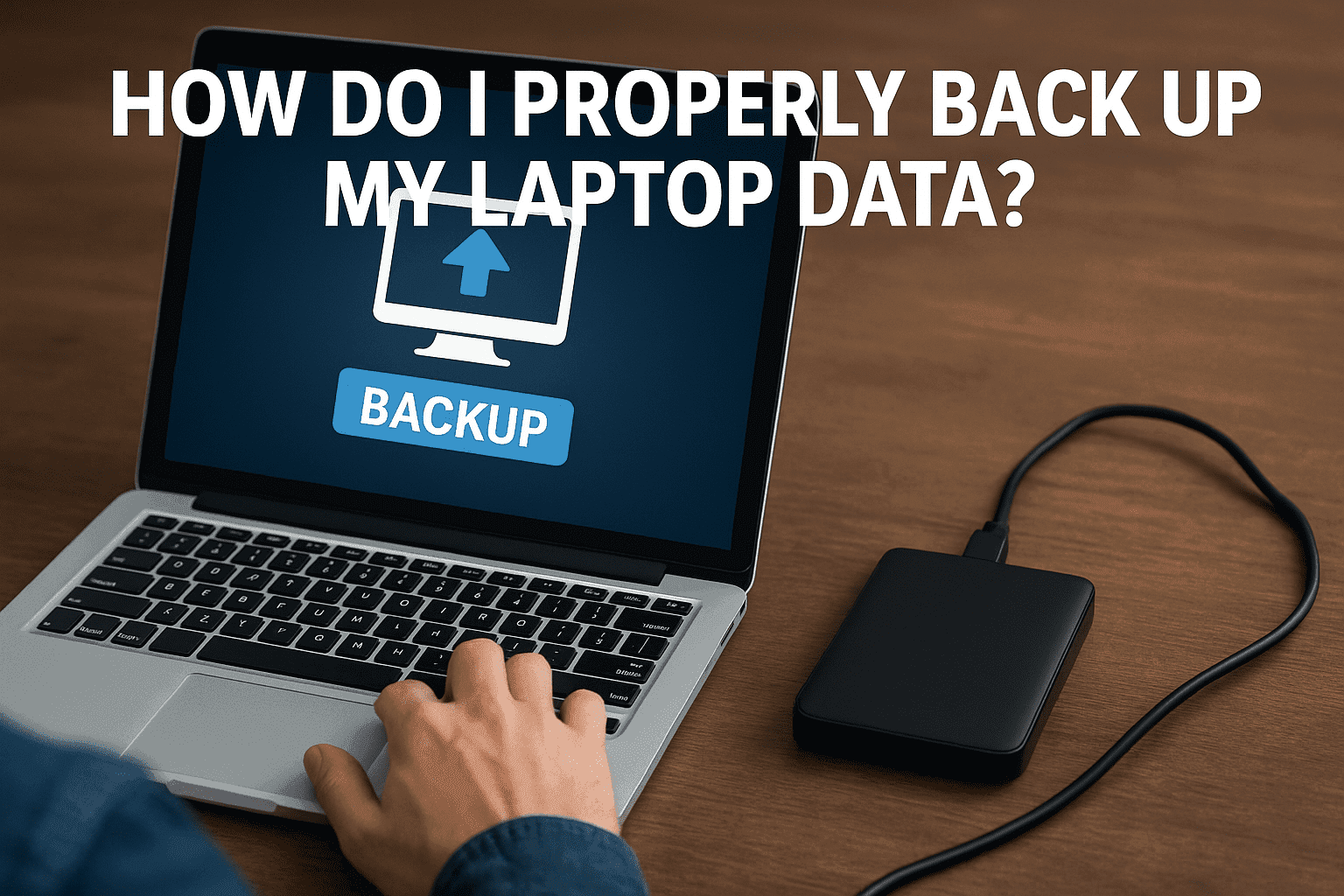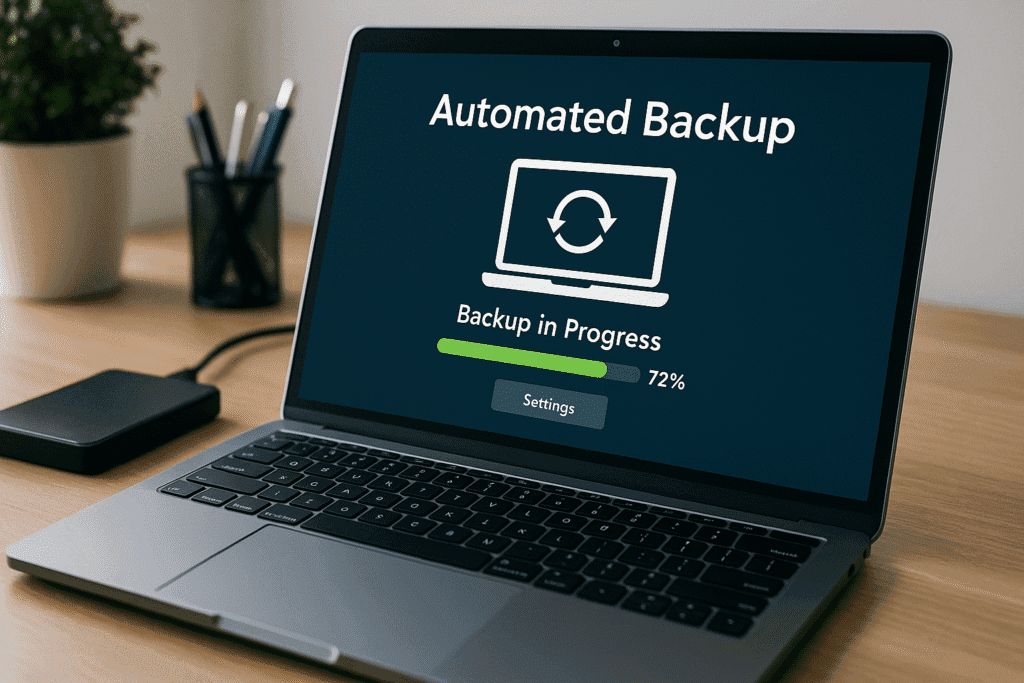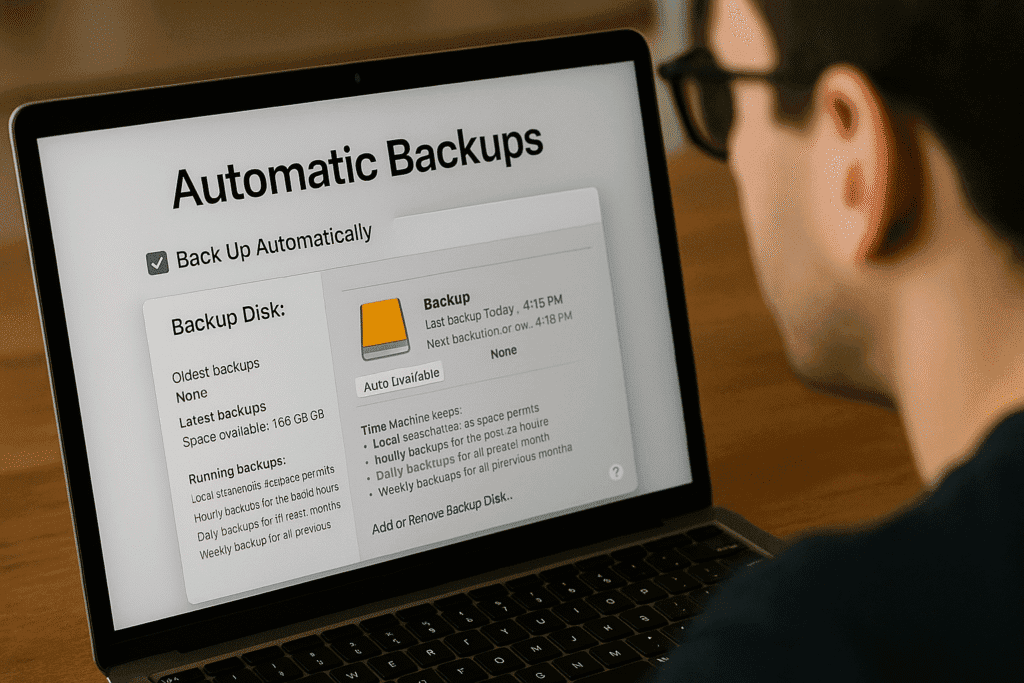
How Do I Properly Back Up My Laptop Data? – The Ultimate Guide
Imagine losing all your cherished photos, important work documents, and personal files in an instant. Scary, right? Yet, this nightmare becomes a reality for countless people every year due to accidental deletions, hardware failures, and cyberattacks. The good news? You can avoid this entirely by learning how to properly back up your laptop data—and it’s easier than you think.
In this ultimate guide, we’ll walk you through why data backups matter, explore the best backup methods, and help you choose the right tools and strategies to safeguard your digital life.
Why Backing Up Your Laptop Data Is Essential
Laptops are convenient, but they’re also vulnerable. Hard drives fail, malware strikes, and accidents happen. Without a reliable backup, you could lose everything in a heartbeat.
✅ Key Reasons to Back Up Your Data:
Hardware Failures: Hard drives and SSDs have a lifespan. When they die, so does your data—unless it’s backed up.
Cyberattacks: Ransomware and viruses can lock or corrupt your files beyond recovery.
Accidental Deletion: One wrong click and vital files disappear.
Device Loss or Theft: Losing your laptop means losing your files—unless you have backups.
Backing up is like having digital insurance. It doesn’t just protect against loss—it gives you peace of mind.
What Should You Back Up?
Before diving into methods, let’s answer a critical question: What data should you actually back up?
🎯 Prioritize These File Types:
Personal photos and videos
Work documents and presentations
Financial records and important PDFs
Emails and contact lists
Project files (designs, code, audio, video)
Software license keys and passwords
Pro Tip: If losing a file would make you sweat, it belongs in your backup plan.

Top Backup Methods You Can Trust
When it comes to backup solutions, there’s no one-size-fits-all answer. The best approach is often a combination of methods to cover all bases.
📁 1. External Hard Drives & USB Drives
How it works: Manually copy files to an external device.
Pros: Simple, fast, no internet required.
Cons: Devices can fail or get lost if not stored securely.
This is perfect for quick, on-the-go backups but shouldn’t be your only solution.
☁️ 2. Cloud Storage Solutions
Cloud services offer secure, off-site backups that you can access from anywhere.
Popular Options:
Google Drive (15GB free, upgradeable)
Microsoft OneDrive (Included with Microsoft 365)
Dropbox
iCloud (Great for Mac users)
Pros: Accessible anywhere, automatic sync, version history.
Cons: Limited free storage, recurring subscription fees for larger plans.
If you’re wondering how to back up laptop data on Windows 11, cloud solutions like OneDrive are seamlessly integrated.

🔄 3. Backup Software Automation
Automating backups ensures you never forget to protect your data.
Popular Tools:
Windows Backup & Restore (Built-in on Windows 10 and 11)
Time Machine (Mac users)
Acronis True Image
EaseUS Todo Backup
With these tools, you can schedule regular backups, back up entire systems, and even create disk images for full restorations.
🗃️ 4. Network-Attached Storage (NAS)
A NAS device acts as your personal cloud server at home.
Pros: Massive storage capacity, accessible from multiple devices, great for families or small businesses.
Cons: Higher initial cost, requires setup.
This is a powerful option if you’re serious about controlling and protecting your data long-term.
How to Set Up Automatic Backups (Step-by-Step)
Let’s get practical! Automating backups takes the hassle out of data protection.
📅 For Windows 11 Users:
Open Settings > System > Storage.
Select Advanced storage settings > Backup options.
Turn on File History or Backup using OneDrive.
Schedule backup frequency and select folders to back up.

🍏 For Mac Users (Time Machine):
Connect an external hard drive.
Open System Settings > Time Machine.
Select the backup disk and set up automatic backups.
Automating your backups ensures that even if you forget, your data stays safe.
Choosing the Right Storage Option
So, which backup method is right for you? Consider these factors:
| Backup Method | Cost | Ease of Use | Security Level | Accessibility |
|---|---|---|---|---|
| External Drives | One-time | Easy | Medium | Physical Only |
| Cloud Storage | Monthly/Free | Very Easy | High | Anywhere |
| Backup Software | One-time/Free | Easy | High | Local or Cloud |
| NAS Devices | High Initial | Moderate | Very High | Home Network |
Pro Tip: Use the 3-2-1 Rule:
3 Copies of Your Data
2 Different Storage Types
1 Copy Offsite (Cloud or NAS)
How to Test and Monitor Your Backups
Creating backups is only half the battle. If you don’t test them, you won’t know if they’re reliable when disaster strikes.
🛠️ How to Test Backups Effectively:
Regularly restore a file from your backup to ensure it works.
Verify that backups include all critical files.
Check backup logs or reports for errors.
Consider using backup monitoring software like Backup Radar or NAKIVO to stay informed about backup health.

Common Backup Mistakes to Avoid
Only backing up once instead of setting up recurring backups.
Relying on a single storage location.
Forgetting to encrypt sensitive backups.
Not testing backups until it’s too late.
Assuming cloud providers automatically back up all files (they don’t unless configured).
FAQs: Your Backup Questions Answered
💡 How do I back up my entire laptop?
Use full system backup tools like Windows Backup or Acronis True Image to create a disk image. This captures everything—files, apps, and system settings.
💡 Should I back up my entire computer?
If you rely heavily on custom software setups and configurations, yes. Otherwise, prioritize critical files and folders.
💡 How do I backup my laptop to an external drive?
Connect your drive, select the files or folders you want to back up, and use File Explorer (Windows) or Finder (Mac) to manually transfer them. For automation, set up File History or Time Machine.
💡 How do I properly back up my laptop data on Windows 11?
Navigate to Settings > System > Storage > Backup Options, and follow the prompts to schedule regular backups via OneDrive or File History.
Final Thoughts: Don’t Wait for Disaster to Strike
Your laptop holds more than just files—it holds memories, important projects, and critical information. Waiting until after a loss is too late.
Take control today:
Choose a reliable backup method.
Automate your backups.
Test them regularly.
Sleep better knowing your digital life is secure.
Ready to protect your data? Start your backup plan today and enjoy peace of mind tomorrow!

I am a USMC Veteran who worked with a Lot of computers and Technology while I was in. I became hooked and learned a lot in my 20 years.
At my store, I am passionate about bringing you the latest tech products that enhance your everyday life. Our mission is to provide quality, innovation, and value, making sure you find the perfect gadgets to fit your needs. Thanks for Your Support.. Larry Mac





